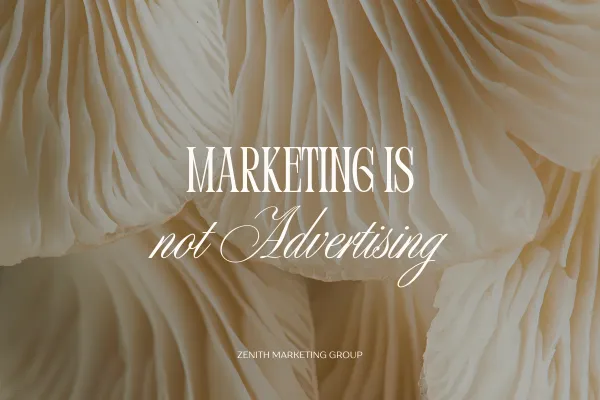
Marketing vs. Advertising: Understanding the Key Differences in the Digital Age
In today’s fast-paced digital landscape, the terms marketing and advertising are often used interchangeably. However, understanding the distinction between these two concepts is crucial for businesses aiming to develop effective strategies that drive growth and engagement. At Zenith Marketing Group, we believe that a clear grasp of these differences can help you allocate resources wisely and craft campaigns that truly resonate with your brand's target audience.
What Is Marketing?

Marketing is a broad, strategic process that encompasses the planning, creation, and delivery of value to customers. According to the American Marketing Association (AMA), marketing is “the activity, set of institutions, and processes for creating, communicating, delivering, and exchanging offerings that have value for customers, clients, partners, and society at large.”
In essence, marketing involves understanding your target audience, identifying their needs, and developing a comprehensive approach to meet those needs through various channels and tactics. It includes market research, branding, content creation, social media engagement, email campaigns, customer relationship management, and much more.
Key Elements of Marketing:
Market Research: Understanding customer behaviors, preferences, and trends.
Brand Strategy: Building a recognizable and trusted brand identity.
Content Marketing: Providing valuable content to engage audiences.
Digital Channels: Utilizing websites, social media, email, SEO, and more.
Customer Relationships: Fostering loyalty and retention.
What Is Advertising?

Advertising is a subset of marketing focused specifically on promoting products or services through paid messages. It involves creating persuasive messages designed to influence consumer behavior and is typically delivered via paid channels such as television, radio, print, digital ads, social media ads, and sponsored content.
The core function of advertising is to generate immediate awareness and drive specific actions, such as making a purchase, signing up for a newsletter, or visiting a website. As per the Data & Marketing Association (DMA), advertising is “a paid, controlled communication designed to inform, persuade, or remind consumers about products or services.”
Key Elements of Advertising:
Paid Media: Campaigns that involve paid placements.
Creative Messaging: Crafting compelling ad content.
Targeting: Reaching specific demographics or behaviors.
Call-to-Action (CTA): Encouraging immediate responses.
The Interplay Between Marketing and Advertising
While advertising is a critical component of marketing, it is just one piece of a larger puzzle. Successful marketing strategies integrate various tactics beyond advertising to build a sustainable brand and long-term customer relationships.
For example, a company might run a targeted Facebook ad campaign (advertising) to promote a new product, but behind the scenes, they also conduct market research, develop branding, optimize their website for SEO, and engage with customers via social media and email marketing. Together, these efforts create a cohesive approach that not only attracts new customers but also retains existing ones.
Why Understanding the Difference Matters
1. Resource Allocation and Strategy Development
Recognizing that marketing encompasses a wide array of activities allows businesses to allocate resources more effectively. Focusing solely on advertising might generate short-term sales but neglect the foundational elements like brand building and customer engagement that ensure long-term success.
2. Measuring Success
Marketing metrics include brand awareness, customer satisfaction, and lifetime value, whereas advertising metrics focus on impressions, click-through rates, and conversions. Understanding these differences helps in setting realistic goals and KPIs.
3. Adaptability in the Digital Era
Digital marketing’s dynamic landscape demands a strategic approach. According to a report by Statista, global digital advertising spending is projected to reach over $600 billion in 2024, underscoring its importance. However, without a solid marketing foundation, advertising efforts may fall short of their potential.
Final Thoughts
In summary, while advertising is an essential tactic within the broader scope of marketing, they are not interchangeable. Marketing is about creating a strategic, customer-centric approach that integrates various activities—including advertising—to build a sustainable and recognizable brand.
For businesses looking to thrive in the digital age, investing in comprehensive marketing strategies that go beyond just advertising will yield better results, foster loyalty, and ultimately drive growth.
Ready to elevate YOUR marketing game? Contact Zenith Marketing Group today to develop a tailored digital marketing strategy that combines the power of branding, content, and targeted advertising for maximum impact.
